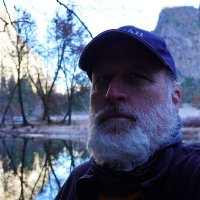
Paul Vander Klay
@paulvanderklay
I want to major in equipping those who follow me with the things that "against such things there is no law". PS. Twitter should be fun.
ID: 17599115
https://www.youtube.com/paulvanderklay 24-11-2008 19:38:37
31,31K Tweet
13,13K Takipçi
1,1K Takip Edilen


"I felt that I needed to believe that I belonged" -christianbaxter_yt youtu.be/6vRvrY78tpw?si… I feel this so deeply, before Chicago I believed that I belonged, but I belonged by faith and not by sight. Chicago was a giving of sight to the blind. It was a belongapocalypse for me.





People who troll Jonathan Pageau and his brother for "Just making stuff up" don't know anything. The ‘great high mountain’ (21:10) to which the city descends has a long mythological ancestry as well as its immediate derivation from Ezekiel 40:2.7 It is the cosmic mountain where


Paul Vander Klay learning about all of our mudwestuary antics on twitter.

.Marcus Shera brought me into this thing. What a treat! theeconplayground.substack.com/p/a-symposium-…

